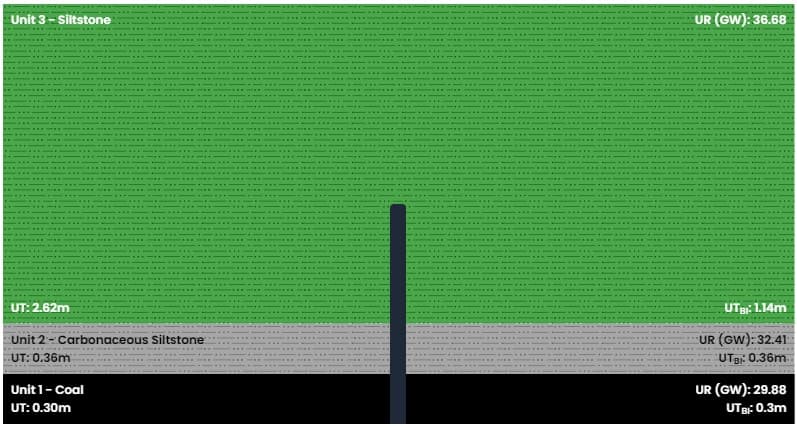Coal Mine Roof Rating (CMRR): An Overview for Geotechnical Engineers
The stability of underground coal mine roofs is a critical concern in mining operations. An unstable roof not only poses significant safety risks to miners but can also lead to operational delays and increased costs. To systematically assess and manage these risks, the Coal Mine Roof Rating (CMRR) system was developed. The CMRR provides a quantitative method for evaluating the strength and stability of mine roofs, enabling engineers to design appropriate support systems and mitigate potential geohazards.

Introduction to CMRR
The Coal Mine Roof Rating (CMRR) system is a rock mass classification technique specifically designed for assessing the stability of coal mine roofs. Developed by the United States Bureau of Mines (USBM) in the early 1990s, CMRR combines elements of traditional rock mass classification systems like Rock Mass Rating (RMR) and Q-system but is tailored to address the unique conditions encountered in coal mines. It evaluates critical rock mass properties such as strength, discontinuities, and moisture sensitivity, and assigns a rating between 0 and 100. A higher CMRR value indicates a more competent and stable roof, while lower values suggest weaker, potentially unstable roof conditions.
The CMRR method plays a key role in geotechnical design for underground coal mines, helping to assess the potential for roof falls and other stability issues. This system has become an essential tool for rock mechanics engineers to inform ground control decisions, particularly in longwall and bord-and-pillar mining.
Key Components of CMRR
The CMRR evaluates several critical factors:
- Rock Strength: Assessed through uniaxial compressive strength (UCS) and point load strength index (PLT) tests of the roof material.
- Discontinuity Characteristics: Includes the frequency, orientation, and condition of joints, bedding planes, and fractures.
- Moisture Sensitivity: Accounts for the impact of water on the strength and behaviour of the roof rock.
- Groundwater Conditions: Evaluates the presence and effect of water within the roof strata.
By quantifying these parameters, the CMRR provides a comprehensive assessment of roof quality, aiding in the prediction and prevention of roof falls.
Mining Industry Applications and Uses
The CMRR has become an indispensable tool in the coal mining industry, offering several practical applications:
1/ Ground Control Design
CMRR helps in determining the appropriate roof support systems based on the assessed roof strength. Mines with lower CMRR values may require more robust support structures such as cable bolts, whereas higher-rated roofs might need lighter support.
2/ Geotechnical Hazard Assessment and Risk Mitigation
CMRR allows geotechnical engineers to assess the likelihood of roof falls, especially in areas with poor geological conditions or weak roof rock. By identifying hazardous zones, mitigation strategies like supplemental bolting or preemptive roof stabilisation can be implemented.
3/ Mine Planning and Layout
Roof conditions are a major consideration in planning underground coal operations. Using CMRR data, mining and geotechnical engineers can optimise the layout of entries and crosscuts, reducing exposure to weaker roof zones and minimising operational delays caused by roof support installation or roof collapses.
4/ Regulatory Compliance
In many coal mining jurisdictions, regular roof condition monitoring and reporting are required. CMRR provides a standardised method for classifying roof conditions, which can be submitted to regulatory bodies as part of safety and operational reports.
Conclusion
The Coal Mine Roof Rating (CMRR) is a valuable tool for geotechnical engineers, providing a systematic approach to evaluating roof stability in underground coal mines. By incorporating parameters such as rock strength, discontinuities, and moisture sensitivity, CMRR enables engineers to design safe and effective ground control systems.
CMRR remains a critical component in the toolbox of mining geotechnical professionals, offering a clear, quantitative measure to guide decision-making in complex underground mining environments.
References
- Molinda, GM & Mark, C (1994). Coal Mine Roof Rating (CMRR): A Practical Rock Mass Classification for Coal Mines. US Department of the Interior, Bureau of Mines.
- National Institute for Occupational Safety and Health (NIOSH) (2018). Practical Rock Engineering for Underground Coal Mining. NIOSH Handbook.